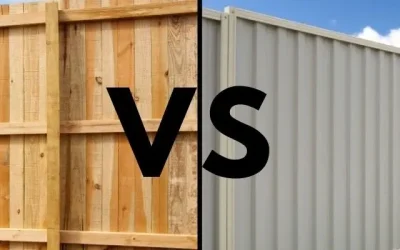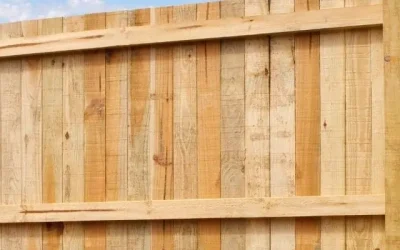Having a fence definitely adds privacy and security to your home, but if it doesn’t comply with local fencing regulations, it can quickly lead to problems. Fencing laws in Melton are shaped by both Victorian legislation and local council regulations. From permits to shared boundaries and neighbourhood disputes, there are a few important things to consider before you start building or replacing a fence. This guide will walk you through the key rules and responsibilities every Melton homeowner should know prior to starting a fencing project. We’ll cover common legal questions, outline your responsibilities, and explain how local rules might apply differently depending on your property.
Use the table below to jump to topic of interest:
- Do You Need Council Approval to Build a Fence in Melton?
- How High Can a Fence Be in Melton Without a Permit?
- Who Pays for a Dividing Fence?
- Can I Build a Higher or Different-Style Fence if I’m Paying the Full Cost?
- Neighbour Disputes Over Fences: What are Your Rights?
- Do Fencing Rules Change in New Housing Estates?
- Are There Different Rules for Fencing Next to Public Land or Reserves?
- Are There Special Rules for Pool Fencing in Melton?
Do You Need Council Approval to Build a Fence in Melton?
In most cases, you won’t need a permit to build or replace a fence along the side or rear boundary of your property, as long as it’s under 2 metres high, and doesn’t include materials like masonry and concrete. These types of fences are generally considered straightforward and are allowed without formal approval.
However, there are situations where approval is required, especially if:
- Your fence will be over 2 metres high
- It includes masonry, like brick or concrete, even if it’s under 2 metres
- Your property is on a corner block or has a planning overlay or easement
- You live next to a public road, reserve, or council-managed land
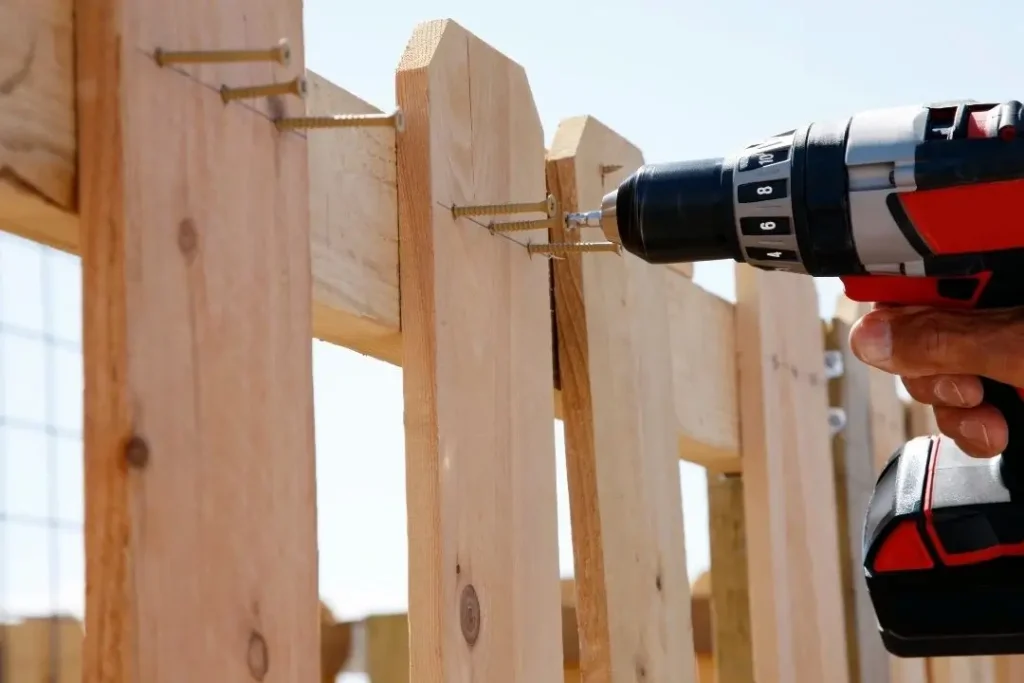
How High Can a Fence Be in Melton Without a Permit?
The maximum height for a residential fence without a building permit is typically 2 metres, but it depends on where the fence is located and what it’s made from. For side and rear boundary fences, you’re usually allowed up to 2 metres high using standard materials like timber, Colorbond, or similar. As long as the design is simple and the materials are non-masonry, you won’t need council approval.
Things are different for front fences. If your fence is within 3 metres of the front boundary, it usually can’t be higher than 1.5 metres if made from common materials like timber, Colorbond or aluminium. But if it’s constructed from solid materials like brick or concrete, it’s limited to 1.2 metres.
Who Pays for a Dividing Fence?
When it comes to dividing fences in Melton, the cost is usually shared equally between neighbours. This is based on the principle that both properties benefit from having a clear boundary. You and your neighbour will have to agree on what’s considered a “sufficient dividing fence”. This usually means a fence that’s reasonable for the area. If you both agree on the type and cost, you can split it 50/50 and move ahead.
But if you want something more expensive, like a higher fence for extra privacy or premium materials like brick or rendered panels, you’ll need to pay the extra cost yourself, unless your neighbour agrees to the upgrade. The best way to handle this is to give your neighbour a written notice of your proposal with details like:
- The fence type and height
- Estimated cost and quotes
- Where will it be placed on the boundary
- When you plan to start
If they agree, you can move forward and share the costs. If not, you may need to negotiate, seek mediation, or follow the formal process to resolve the issue.
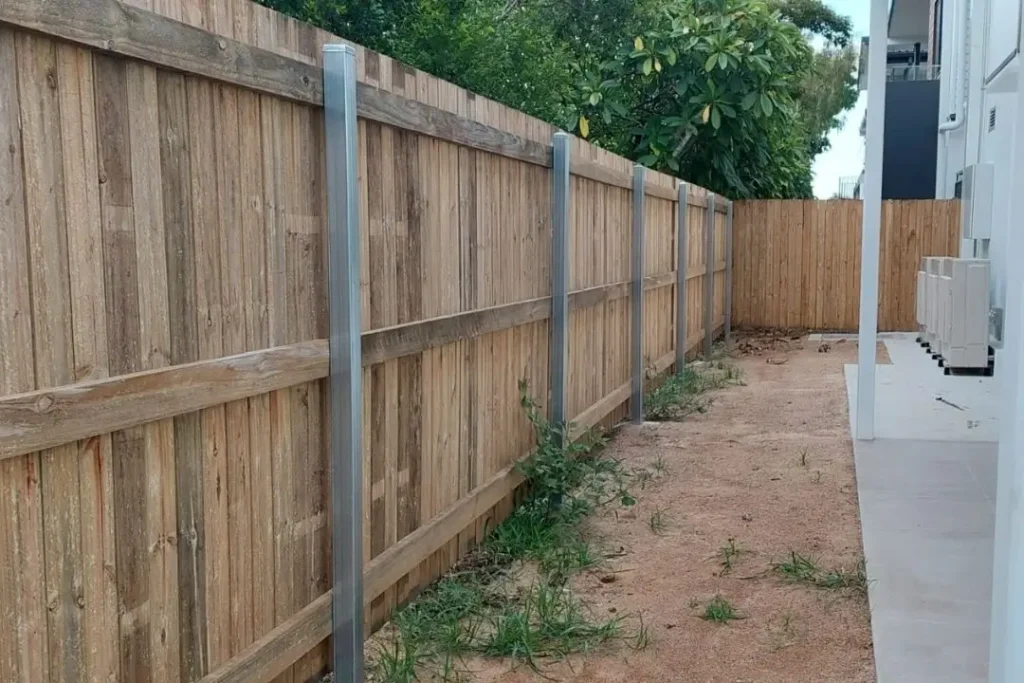
Can I Build a Higher or Different-Style Fence if I’m Paying the Full Cost?
Yes, you generally can, but it depends on where the fence is built and whether it meets local regulations. If you’re building a fence entirely on your side of the boundary, you have more freedom to choose the height, materials, or design, provided it complies with Melton Council’s rules. A building permit may be required for anything over 2 metres for certain materials like brick or concrete.
If the fence sits on a shared boundary, you’ll need your neighbour’s consent to go beyond what’s considered standard. You can offer to pay the extra cost if they don’t want to contribute to the upgrade.
E.g. you can obtain two separate quotes from your Melton fencing contractor.
Quote 1. A regular standard timber paling fence made from treated pine
Quote 2. A decorative “upgrade” like a lapped and capped timber paling fence with hardwood posts and timber plinth underneath.
You compare the two quotes, and if your neighbour doesn’t want to pay for the upgraded version, then they pay half the cost of the standard fencing option, and you cover the remainder of the cost.
Just keep in mind that higher or non-standard fences may still need council approval or estate sign-off before you build.
Neighbour Disputes Over Fences: What are Your Rights?
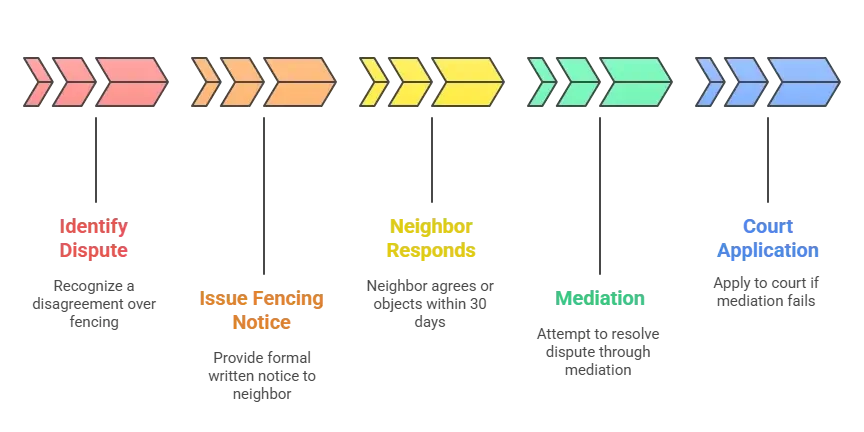
Fencing disagreements between neighbours are more common than you think, especially when it comes to cost, design choices, or where exactly the fence should go. The good news is that there’s a clear process in place to help resolve these issues fairly.
Before building or replacing a dividing fence, you should give your neighbour a fencing notice. This written notice sets out the type of fence you’re proposing, where it will go, the estimated cost, and how you’d like to split it. Even if you’ve already discussed it verbally, providing formal notice is part of the legal process and helps avoid confusion later on.
Once you’ve given notice, your neighbour has 30 days to respond. If they agree, you can move forward and share the cost. If they object or don’t reply, the next step is to try mediation through the Dispute Settlement Centre of Victoria, which is a free service that helps neighbours work through fencing disagreements.
If mediation doesn’t resolve things, you can apply to the local Magistrates’ Court to make a decision. But most issues can be sorted out long before it gets to that stage. For more information, you should visit the Dispute Settlement Centre of Victoria regarding fence disputes.
Do Fencing Rules Change in New Housing Estates?
Yes, if you live in a newly developed area or housing estate, you may be subjected to additional fencing rules beyond standard council regulations. These often come in the form of developer-imposed covenants or estate guidelines designed to maintain a consistent look across the neighbourhood. These restrictions can include fence heights, specific materials, or style requirements. Many estate developers require fences to match a design standard, such as using timber paling with exposed posts, limiting colours to natural tones, and materials other than Colorbond to maintain a cohesive streetscape.
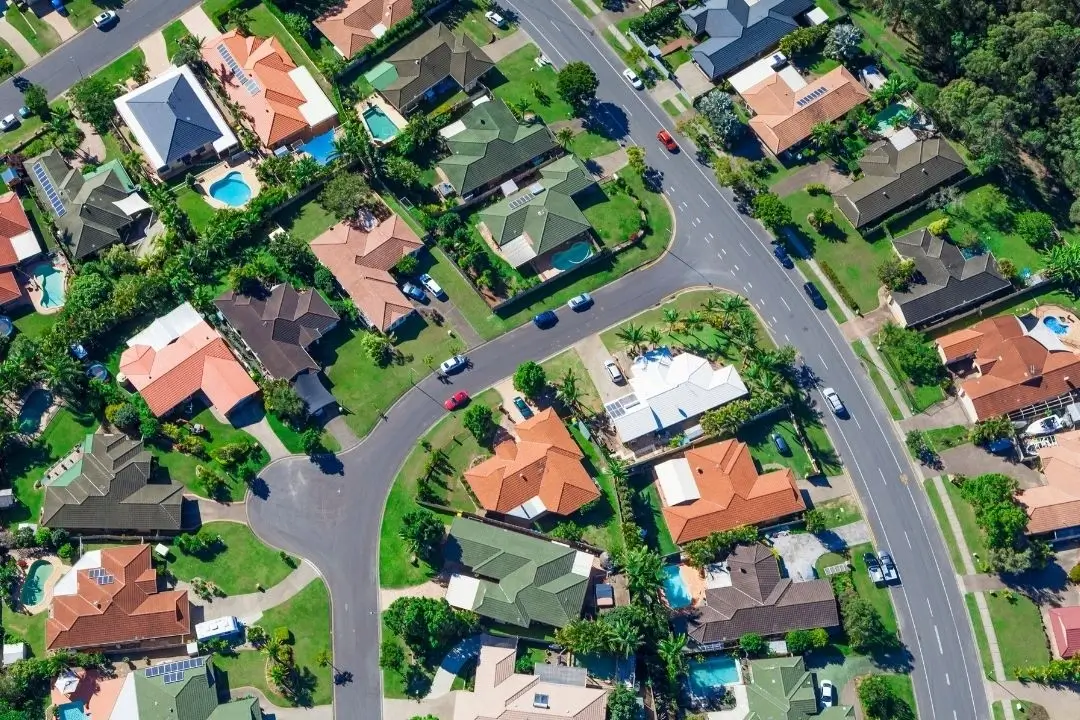
If you’re building or replacing a fence in a newer area like Aintree, Strathtulloh, Fraser Rise, or Mount Atkinson, it’s important to:
- Check your contract or title documents for any fencing covenants
- Ask your developer or builder about current design rules
- Make sure your plans meet both council and estate requirements
Overlooking these restrictions can result in being asked to remove or modify the fence, often at your own cost. A quick check upfront will save you a major headache later.
Are There Different Rules for Fencing Next to Public Land or Reserves?
Yes, if your property backs onto council-owned land like a park or reserve, Melton City Council may contribute up to 50% of the cost to replace an existing timber fence, with a maximum contribution of $6,000 (excluding GST). Take note that this only applies to replacement fencing, not new fences. The fence must be wooden and no taller than 1.93 metres. Anything above that height or made with different materials will be at your own cost. You must also use a registered fencing contractor with public liability insurance, and demolition must be done by the contractor.
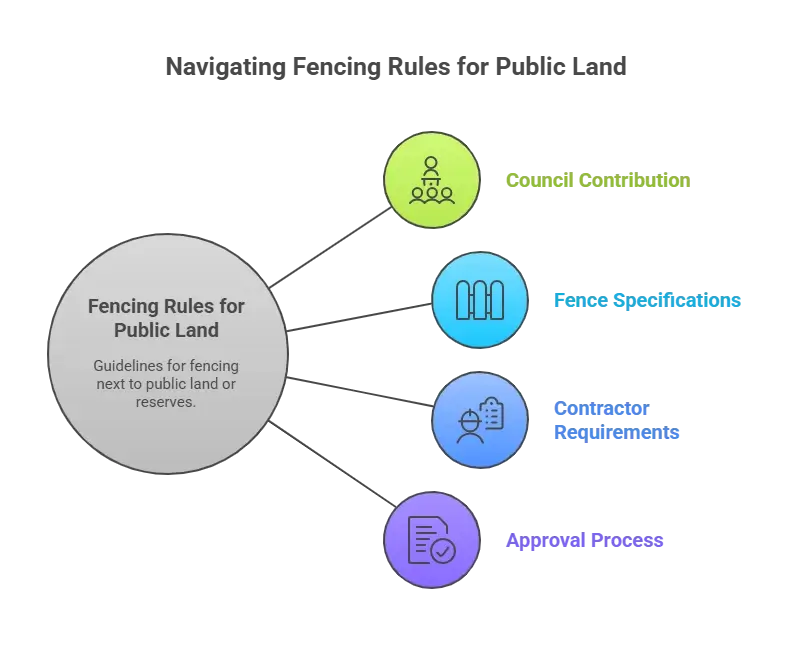
Council approval is required before any works begin, especially if you’re proposing gates, embellishments, or variations to the standard fence. The application process involves submitting two quotes, or three if over $6,000, for assessment, and the council will inspect the site before and after construction. Payment is only made after a satisfactory final inspection and upon receiving a tax invoice directly from the contractor. If you don’t follow the steps or build a non-compliant fence, the council won’t contribute to the cost, and you’ll be responsible for the full amount.
Check out these guidelines for fences dividing Council land and private property from the Melton City Council for more information on the topic.
Are There Special Rules for Pool Fencing in Melton?
Pool fences in Melton must meet strict safety requirements under Victorian law, specifically the Building Regulations 2018. These rules apply to both in-ground and above-ground pools and spas with a depth greater than 30cm. Fences must be:
- At least 1.2 metres high
- Have self-closing, self-latching gates
- Free of any climbable objects within 900mm of the barrier
Pool fencing must also be inspected and certified by an authorised private inspector. If you own a property with a pool or spa, you’re legally required to register it with the Melton City Council to make sure it complies with pool fence requirements. This includes regular inspections by a registered building surveyor or inspector every four years. Failing to comply can result in fines, so it’s essential to make sure your barrier is up to standard, whether you’re installing a new fence or updating an old one.
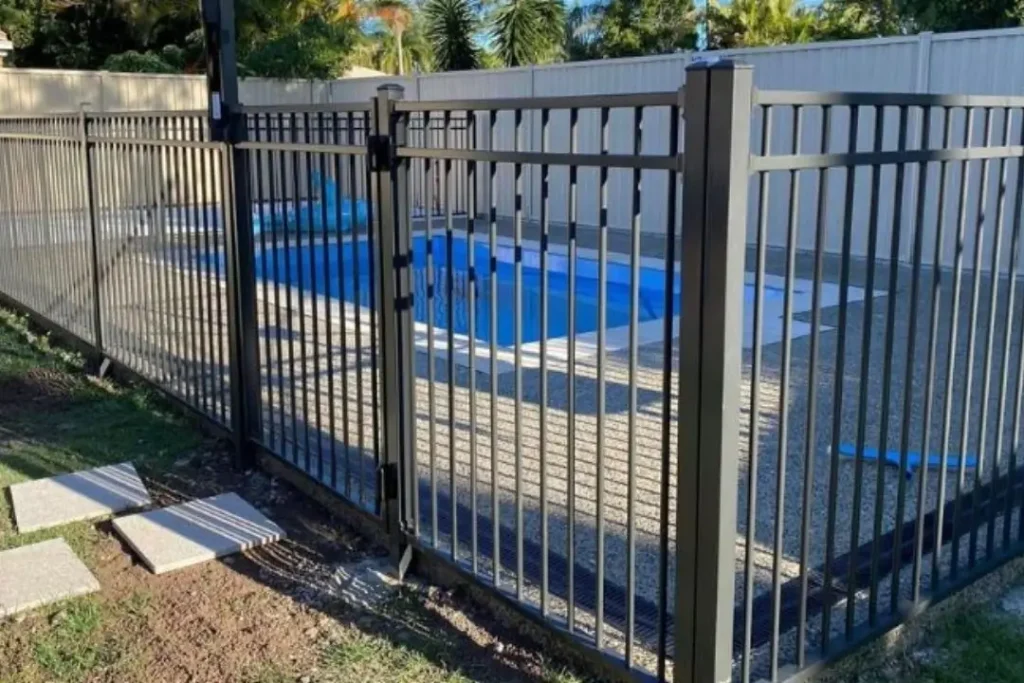
Conclusion
Fencing might seem straightforward, but in Melton, there are some rules worth knowing before you start digging post holes. From council permits and fence height limits to shared costs and developer restrictions, understanding your responsibilities can save you time, money, and potential conflict with neighbours or the council. Before you start your project, take a moment to check in with your neighbour, review your property title for any covenants, and contact Melton City Council if you’re unsure about your specific situation.
Planning a new fence? We’ll help you get it right. As local Melton fencing contractors, we understand the local rules, the paperwork, and the little details that can trip people up, and we’ll make sure your new fence is safe and legal. If you’re unsure where to start or want a quote from a team that knows the local requirements inside out, get in touch today!


